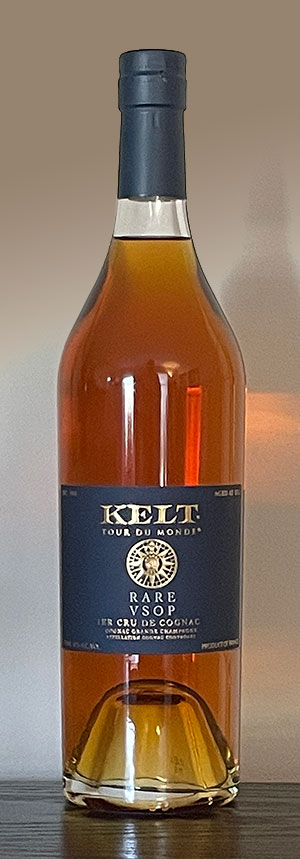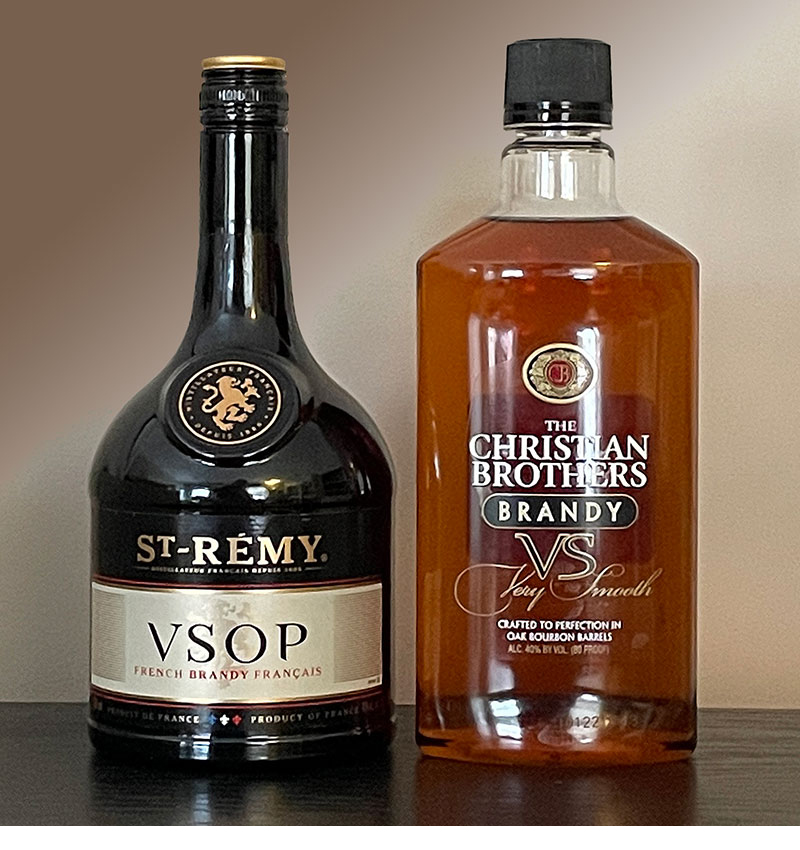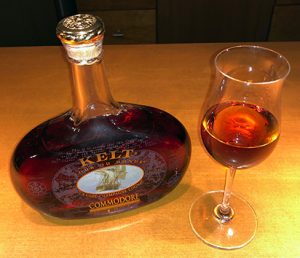
First, let’s talk about brandy vs. cognac. Brandy is a liquor distilled from wine and aged in wood. (Brandy can be made from fruits other than grapes as well, but that’s a story for another time.) Cognac is brandy that specifically comes from the town of Cognac and the delimited surrounding areas in western France. (The one which has the most favorable soil and geographical conditions is Grande Champagne.) So, all cognacs are brandy, but not all brandies are cognac. For more detail on cognac, click here.
Until the early 1900s cognac was shipped in barrels. The long sea voyages had a profound effect on the quality of the cognac. When cognac started to be shipped in bottles, many felt something had been lost. Hoping to recapture that quality, Estonian-born Swedish entrepreneur Olev Keltes established the Kelt Cognac company in 1988. He began his career with the study of the distillation of cognacs as well as madeira, rum, and aquavit. It was this study that led him to rediscover the lost secret that quality improved in spirits that were aged in barrels on a long trip at sea . It is this maturation at sea that sets Kelt apart from other cognac houses.
Continue reading “Kelt Tour du Monde Rare VSOP Cognac”


